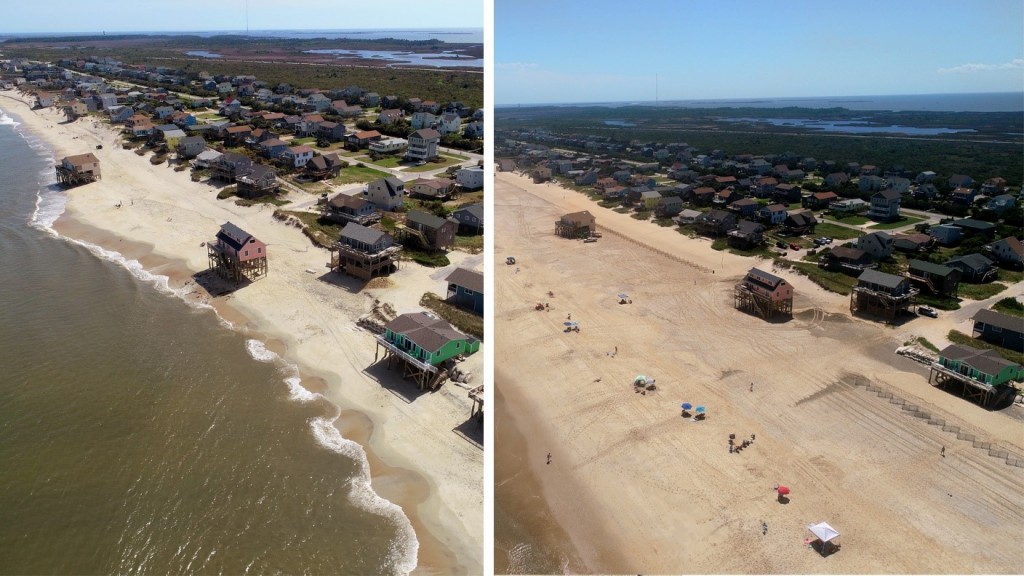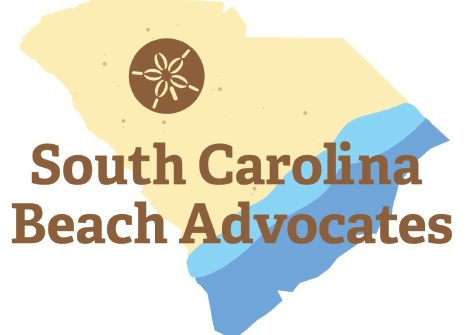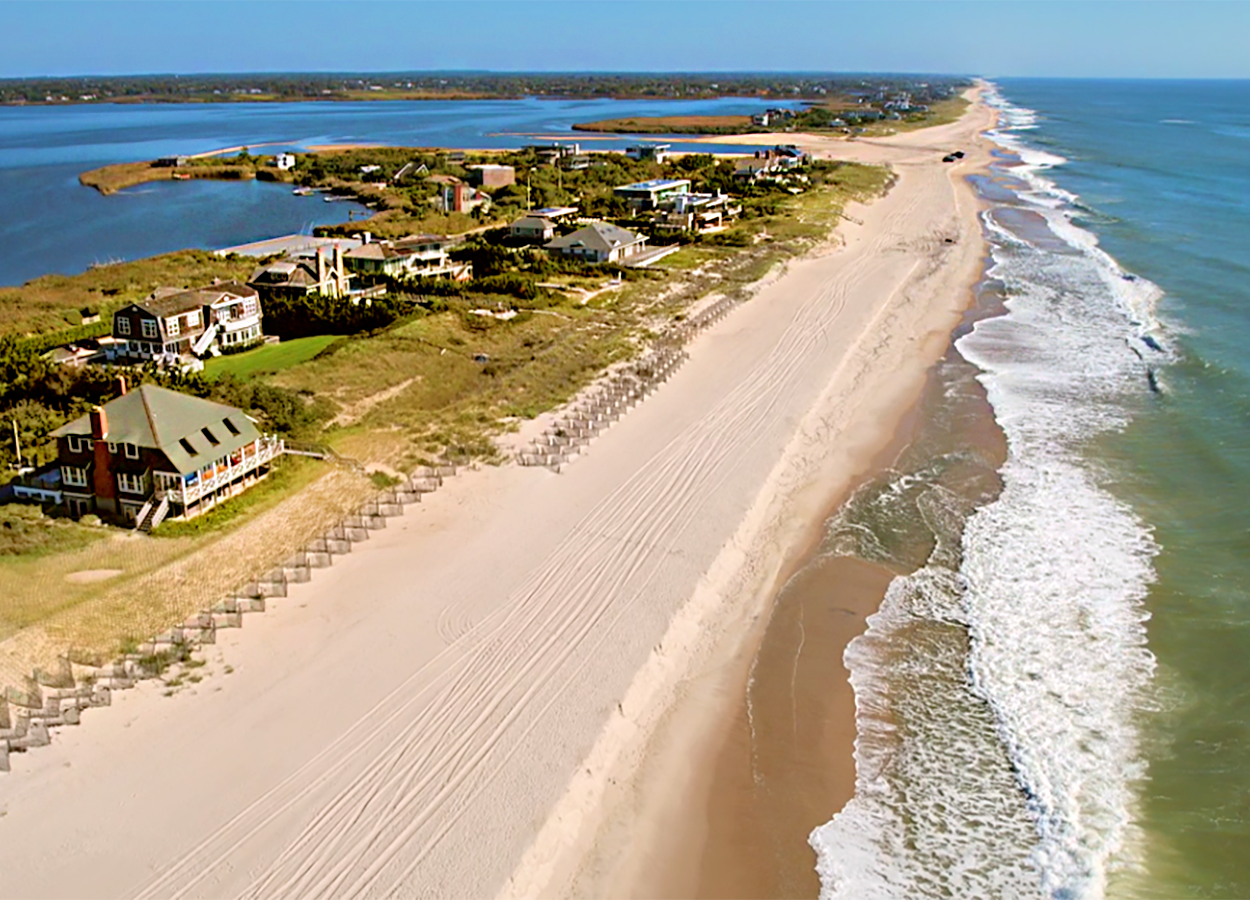
CSE’s first nourishment events were in the 1980s with projects at Seabrook Island, Isle of Palms, and Myrtle Beach, South Carolina. With each decade, we have had opportunities to restore many beaches, with volumes doubling each decade from the 1990s to the present. We are now working on our 55th project (Avon, NC), which will bring our total of sand volumes moved to nearly 45 million cubic yards (cy) by the end of 2022. Numbers like this are difficult to visualize, but here is a simple way to consider the impact.
One cubic yard of nourishment sand adds about 1.2 square feet of beach area at most of our project sites. Therefore, CSE projects have added about 50 million square feet (~1,500 acres) of beachfront area in South Carolina, North Carolina, New York, and Georgia. The national total for all nourishment projects since 1923 is about 40,000 acres (over 60 square miles!).
Critics of nourishment often focus on the temporary nature of placing sand on beaches, concerned that the projects soon have to be repeated. However, as nourished beaches erode, some other oceanfronts will gain that sand. Further proving there can be lasting benefits, most of the nourished beaches in the US are in better condition today than when they were first nourished. This is visually evident since the first projects at Coney Island, NY (1923), Jones Beach, NY (1927), Miami Beach, FL (1976), and Myrtle Beach, SC (1986), not to mention much of the New Jersey shore and some famous California beaches.
Sand volumes added to beaches have provided lasting value in the form of larger recreational areas, better storm protection, and expanded habitat for coastline species. Furthermore, these projects have reduced the proliferation of seawalls.
South Carolina accounts for about 6% of national expenditures to date on beach nourishment ($500 million out of $8.2 billion). The US Army Corps of Engineers has designed most of these projects; CSE projects (~$120 million and ~18 million cy) represent about 25% of the state total.
 Considered against the nationwide totals, CSE has been responsible for 2–3% of all nourishment projects to date (by cost, volume, number of sites, and number of events). While several projects are significant, CSE’s most important contribution is the diversity of project sites we have restored. We have designed solutions for high energy beaches like Nags Head (NC), low energy sites with high tide ranges like Hunting Island (SC) and Sea Island (GA), and sites where tidal inlets are stealing sand (Folly Beach, SC), or bypassing sand erratically (Isle of Palms, SC).
Considered against the nationwide totals, CSE has been responsible for 2–3% of all nourishment projects to date (by cost, volume, number of sites, and number of events). While several projects are significant, CSE’s most important contribution is the diversity of project sites we have restored. We have designed solutions for high energy beaches like Nags Head (NC), low energy sites with high tide ranges like Hunting Island (SC) and Sea Island (GA), and sites where tidal inlets are stealing sand (Folly Beach, SC), or bypassing sand erratically (Isle of Palms, SC).
CSE has partnered with coastal communities to develop beach nourishment solutions for the past 35 years. Our success in understanding the causes of erosion within diverse settings helps us deliver lasting, sustainable solutions for our clients.






